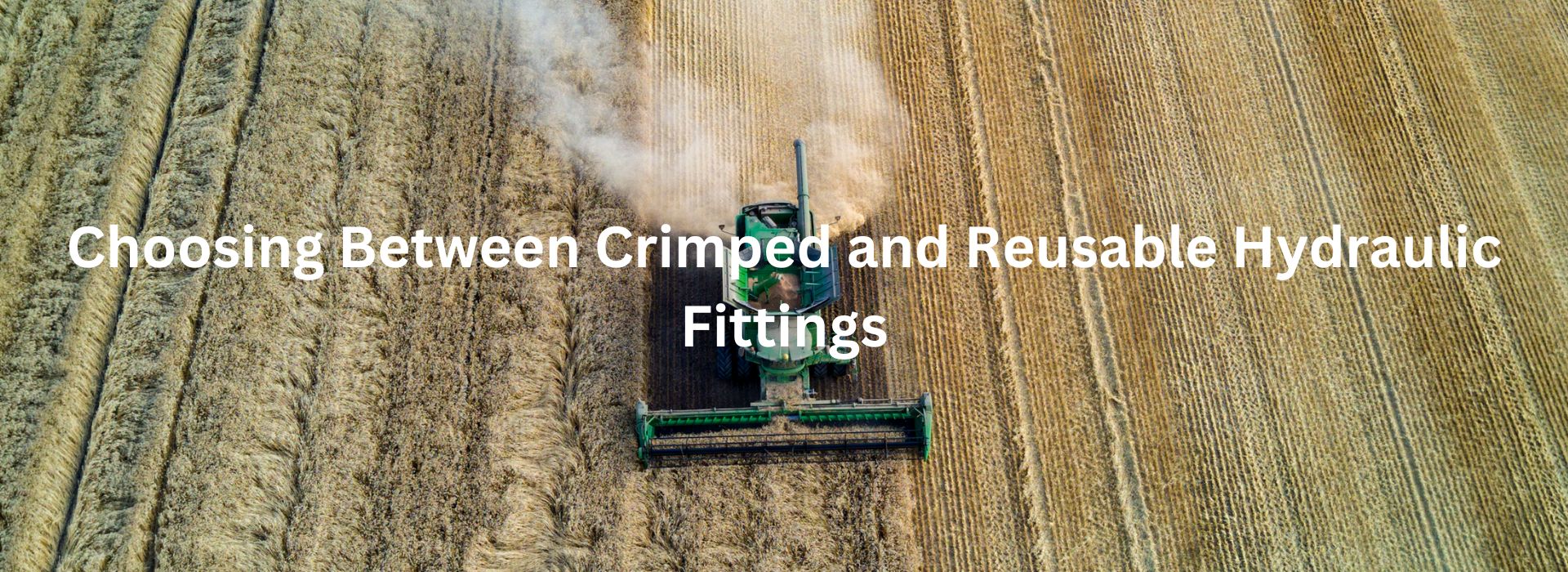
Navigating the complex environment of hydraulic fittings can be a daunting task, especially when considering factors such as performance, longevity and cost effectiveness. This guide aims to provide a comprehensive introduction to the complexities of hydraulic fittings, with a focus on crimp and reusable types. Here we will delve into the advantages and disadvantages of both types and consider how best to apply them in practical applications. We will also provide you with the tools and knowledge you need to install these fittings and guide you in choosing the right Chinese manufacturer.
Hydraulic fittings are the key connecting components in a hydraulic system. These small, indispensable parts help hydraulic fluids flow safely through the system, connecting tubing, pipes, and hoses to different components such as pumps, valves, and actuators. The integrity of the entire hydraulic system depends on the quality and reliability of these fittings.
Why are hydraulic fittings so important? The answer lies in the performance of the system itself. Hydraulic systems operate at high pressures, sometimes up to thousands of pounds per square inch. Under these conditions, even minor leaks or flow obstructions can lead to severe performance degradation and even catastrophic system failure. Essentially, hydraulic fittings are the guardians of system integrity, ensuring safe and efficient fluid passage.
Crimp fittings are advanced hydraulic fittings designed to form a durable, leak-proof connection with hoses. The fitting itself is mechanically interlocked by means of a crimping machine. The device creates an impermeable seal by pressing a metal sleeve (also known as a ferrule) tightly onto the hose, where it cannot be removed.
Robust connection strength
The first advantage of crimp fittings is their high connection strength. The mechanical crimping process ensures that these fittings provide a strong, leak-proof connection that minimizes the risk of accidental disconnection or fluid leakage.
Safety
Secondly, the robust construction and precision engineering of crimp fittings contributes to operational safety. Their high reliability reduces the likelihood of hazardous situations such as hydraulic fluid leaks that would otherwise pose serious risks.
Long service life
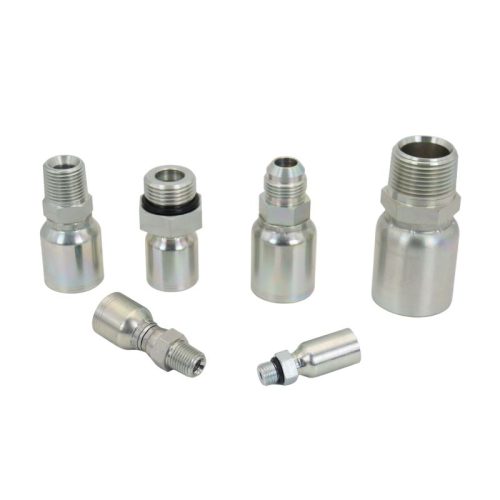
In addition, crimp fittings are constructed to be extremely durable. The durability of the materials and the strength of the crimped connection give them a long service life, making them a cost-effective option for a long time.
Suitable for high-pressure applications
Finally, crimp joints exhibit excellent performance in high-pressure applications. The mechanical locking coupled with the quality of the materials used allows these joints to withstand extremely high hydraulic pressures, making them indispensable in demanding applications.
Non-reusable
In terms of disadvantages, crimp fittings are generally not reusable. Once crimped onto a hose, they form a permanent connection that is difficult to remove without damaging the fitting or hose.
Specialized Equipment Required
In addition, installing crimp fittings requires the use of specialized crimping machines. This adds to the initial cost and complexity and requires trained personnel to install it correctly.
Crimp fittings are used most effectively in a variety of practical applications where their unique advantages outweigh their limitations. Some of these applications include
Industrial manufacturing: High-pressure hydraulics typically drive assembly lines and heavy machinery, making crimp fittings the best choice.
Construction equipment: In machinery such as hydraulic excavators and bulldozers, the need for robust and reliable fittings is paramount. Crimp fittings fulfill these requirements perfectly.
Oil and gas operations: Crimp fittings are the preferred choice due to the high-pressure requirements and the dangerous nature of the fluids involved.
Marine applications: Corrosive marine environments require fittings that can withstand harsh conditions while maintaining integrity at high pressures, making compression fittings the natural choice.
Reusable fittings, unlike crimped fittings, can be used multiple times. These hydraulic fittings can be disassembled and reassembled so that modifications or repairs can be made to the hydraulic system without replacing the entire fitting. Their main features are their simple design and ease of installation or disassembly.
Reusability
First and foremost, the primary advantage of reusable fittings lies in their name—they can be reused. This attribute makes them an economical choice for applications where frequent changes are anticipated.
Quick Installation
Moreover, their simple design facilitates quick installation and dismantling, saving both time and labor costs.
Flexibility
Furthermore, the reusability factor offers greater flexibility in system design and modifications. This enables quick adaptations to meet changing operational requirements.
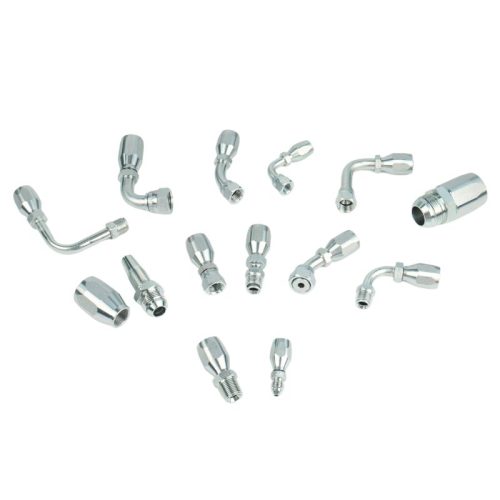
Unsuitability for High-Pressure Applications
One major drawback is their general unsuitability for high-pressure applications. The absence of a mechanical lock as found in crimp fittings reduces their overall pressure tolerance.
Potential Leak Risks
Although these fittings are generally reliable, improper installation or extended wear and tear can increase the potential for leaks, posing operational risks.
Reusable fittings are especially beneficial in scenarios where adaptability and flexibility are more critical than high-pressure performance. These include:
Prototyping: For hydraulic systems still in the testing phase, where frequent modifications are expected.
Agricultural Equipment: In less critical systems like sprayers or other low-pressure hydraulic machinery.
Light Industrial Uses: In operations where pressure requirements are moderate and the costs of frequent fitting replacement are a concern.
DIY Projects: For home-based or smaller-scale hydraulic applications where the simplicity of design and ease of installation are key.
In this section, we will conduct a more specialized comparative analysis focusing on the external characteristics, pressure ranges, countries of use, common applications, and inherent advantages of crimped and reusable hydraulic fittings.
● Crimped Fittings
Appearance: Fittings are not removable and are one-piece fittings. Robust, well-designed, and highly accurate.
Material: Usually made of durable materials such as steel or stainless steel to withstand high pressures.
● Reusable Fittings
Appearance: It is a split fitting and can be divided into two parts. The design is generally simple and easy to operate.
Materials: Available in stainless and carbon steel, aluminum, and other materials with varying degrees of durability and corrosion resistance.
● Crimp Fittings
These are preferred for high-pressure applications. Designed for secure, leak-proof connections, they can withstand pressures up to 5,000 psi.
● Reusable Fittings
Reusable fittings are primarily suited for low to medium-pressure applications and are typically rated for pressures up to 3000 psi.
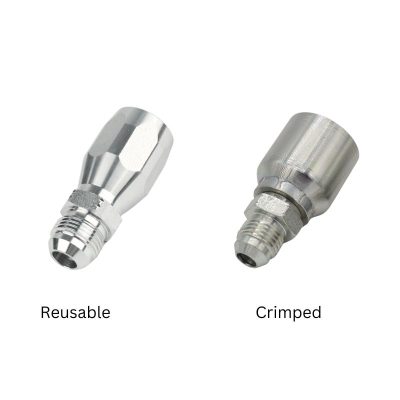
Both types of fittings are used around the globe, but preferences may vary depending on local industry codes and regulations but are not absolute.
U.S. and Canada: High-pressure applications in these countries typically use crimp fittings because of their ruggedness and long-term reliability.
Asian Markets: Reusable fittings are used more frequently because of the higher frequency of system modifications and cost sensitivity in these markets.
● Crimp fittings
Offshore drilling rigs: due to their high-pressure tolerance.
Heavy machinery: Used in industries such as construction and mining.
● Reusable fittings
Agricultural equipment: mainly sprayers and other low-pressure equipment.
Light industrial applications: such as conveyor systems and automated production lines.
● Crimp fittings
Reliability: excellent performance in high-pressure environments.
Low maintenance: due to their robustness and durability, they require little intervention.
● Reusable fittings
Flexibility: easy to install or remove, highly adaptable.
Cost-effective: especially in the short term, thanks to their reusability.
When choosing between crimped or reusable hydraulic fittings, several factors can have a significant impact on the effectiveness and longevity of a hydraulic system. This section will shed light on the key considerations, focusing on application requirements and the all-important aspect of cost versus value.
Pressure Requirements
High-Pressure Systems: Crimp fittings are preferred for their ruggedness and ability to withstand high pressures.
Low to medium pressure: Reusable fittings may be more appropriate, especially if the system is subject to frequent changes.
Environmental conditions
Corrosive environments: Materials such as stainless steel or brass are available in both crimp and reusable types.
Standard conditions: Carbon steel fittings are economical and durable.
Replacement Frequency
Static systems: Crimp fittings are suitable for systems that require very little modification.
Dynamic Systems: If your system requires frequent changes, reusable fittings provide the flexibility you need.
Initial investment
Crimp Fittings: Upfront costs are generally higher due to the need for specialized crimping equipment.
Reusable fittings: Initial investment is lower because no special tools are required for installation.
Long-term maintenance
Crimp fittings: Long-term maintenance costs are usually low and can offset the initial investment.
Reusable fittings: Long-term maintenance costs may be higher due to the possibility of leaks or the need for replacement parts.
Value Proposition
Crimp fittings: Ideal for long-term, high-pressure applications where reliability and durability are critical.
Reusable fittings: Ideal for systems that require flexibility and frequent modifications; good for short-term applications or projects with tight budgets.
Accurate installation of hydraulic fittings is critical to the operational integrity of your hydraulic system. Below, we provide a step-by-step guide to installing crimped and reusable fittings, detailing basic tools, and outlining best practices.
Tools Required
Hydraulic hose crimper
Calipers or hose measuring tool
Hose cutting tool
Lubricant
Safety gloves and goggles
Cut the hose: Using the hose-cutting tool cut the hose to the desired length.
Measure and Mark: Use calipers to measure the depth of the fitting and mark the hose accordingly.
Lubricate: Apply lubricant to the inside of the hose and fitting.
Insert Fitting: Place fitting into hose until depth mark is reached.
Set Crimp: Configure hydraulic hose crimp to manufacturer’s specifications.
Swage: Place the hose in the swage machine and start the machine to swage fitting onto the hose.
Inspect: Inspect the crimp to ensure that it is even and secure and meets specifications.
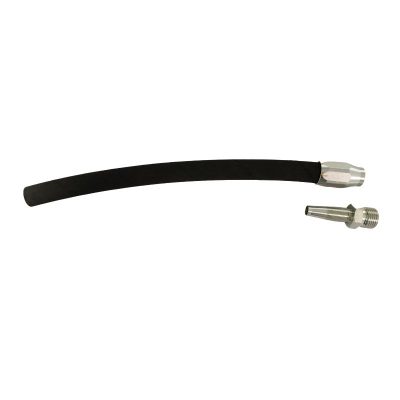
Required Tools
Wrench
Thread sealant
Hose clamp
Safety gloves and goggles
Cut Hose: Use a hose-cutting tool to cut the hose to the desired length.
Apply thread sealant: Apply thread sealant to the threads of the reusable fitting as recommended.
Hand Tighten: Insert the reusable fitting into the hose and hand tighten it as much as possible.
Use wrenches: Use two wrenches to fully tighten the fitting, one to hold the hose and one to tighten the fitting.
Secure with Hose Clamps: For added safety, use hose clamps, especially in low and medium-pressure applications.
Inspect: Inspect fittings to ensure they are securely connected and properly aligned.
Choosing a reliable hydraulic fitting manufacturer is a critical decision that can have a significant impact on the performance and reliability of your hydraulic system. Given the wide range of options, focusing on a Chinese manufacturer can offer unique advantages in terms of quality and cost-effectiveness. Here are some key criteria and aspects to consider.
Quality Certification
Look for manufacturers that hold internationally recognized quality certifications such as ISO 9001. These certificates are proof of the quality of the product and the production process.
Production capacity
Evaluate the volume of production the manufacturer can handle, especially if your demand is high. Make sure they can meet your quantity requirements without compromising on quality.
Range of materials
The quality of the material is critical to the longevity and functionality of the fittings. Choose a manufacturer that offers a wide range of materials such as steel, stainless steel, and brass to suit different environmental conditions.
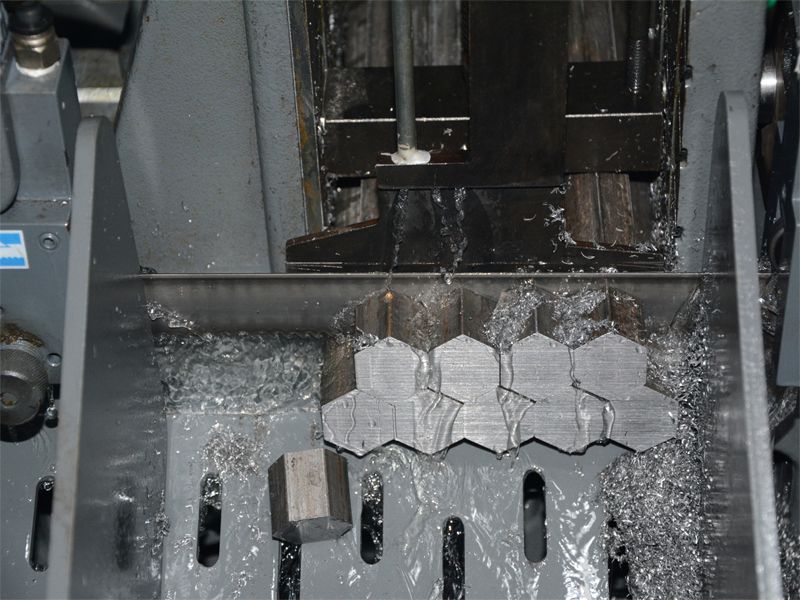
Technical Support
Professional technical support can guide you in selecting the right fittings for your specific application needs. Therefore, a manufacturer with a skilled technical team is always a valuable asset.
Delivery time
Consider the manufacturer’s ability to deliver the product within the time you require. Delays can have a serious impact on operational efficiency.
Customization
If your hydraulic system has special needs, the ability to customize parts will be a valuable feature of the manufacturer.
Pricing
While cost should not be the sole determining factor, it is critical to consider it in conjunction with the value provided. Choose a manufacturer that offers a reasonable price/performance ratio.
Cost Effectiveness
Chinese manufacturers typically have lower operating costs, which means more competitive pricing and does not necessarily compromise on quality.
Rapid Scalability
Chinese factories are known for their rapid scalability, which means they can quickly adapt to increases in demand to ensure a stable supply.
Technology integration
Advanced technology and automation are increasingly being integrated into Chinese production processes to ensure that high-precision and high-quality parts are produced.
By considering the above criteria and focusing on Chinese manufacturers, you can make more informed decisions, ensuring a balance between quality and cost-effectiveness.
In this comprehensive guide, we explore the critical role that hydraulic fittings, particularly crimp and reusable types, play in the functionality and reliability of hydraulic systems. We outline their respective advantages, disadvantages, and ideal applications, providing a comprehensive view of your decision-making process. A comparative analysis also helps weigh the long-term costs and performance of these fitting types. If you have questions about detachable or crimp fittings, contact Topa and we’ll do our best to help you.